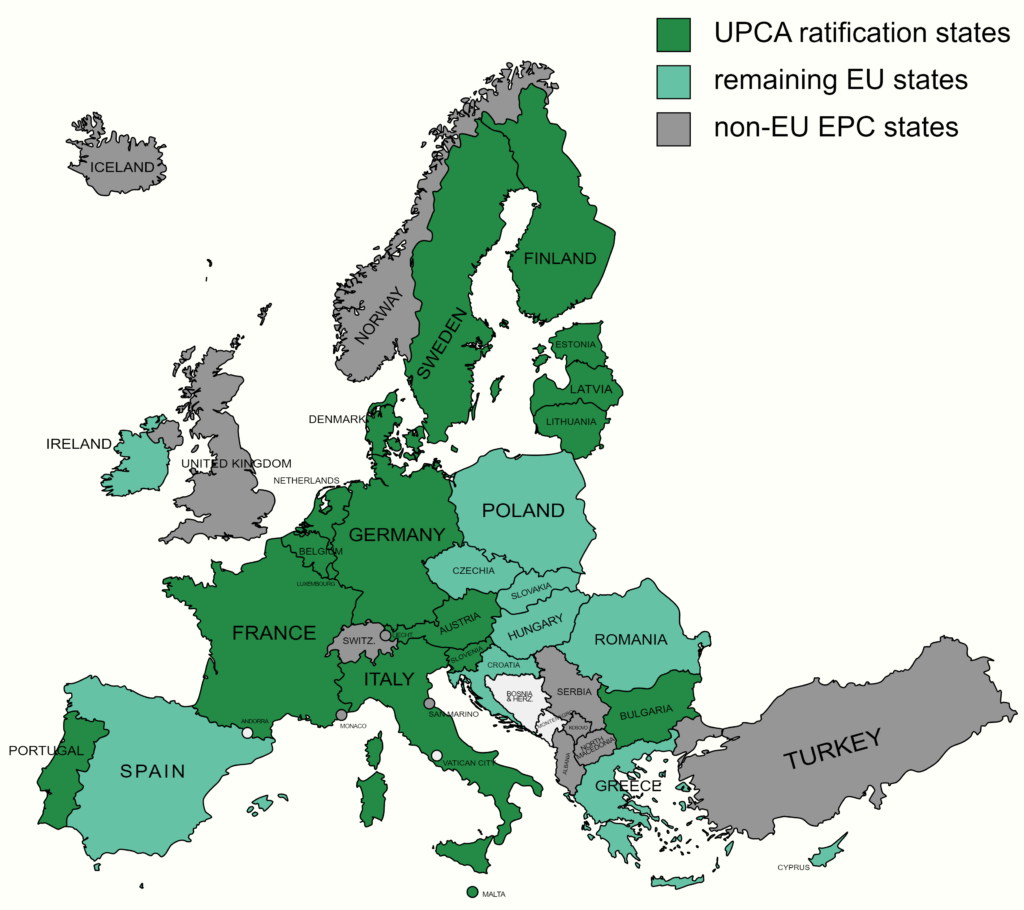This is the first post of a quick tip series, which is intended to provide a view on the UPC between the overly optimistic perspective of its promoters and the mere collections of legal issues of its opponents.
After many years of delay, the Unified Patent Court (UPC) has regained its momentum and there seems little that could still prevent it from becoming a reality (which does not mean that there could not be new challenges coming up after entry into force). An important difference from false promises of the past is that the inofficial waiting time of at least 7 years for fundamental changes in the EP patent system has now passed. The EPC 2000 was adopted in 2000 and entered into force in 2007. The London Agreement was concluded in 2000 and entered into force in 2008. For the UPCA, starting from 2013, I recommended to be cautious before 2020 and now believe for the first time that it will actually happen.
The provisional application phase has just begun on 19 January 2022 and formally, only the deposit of the ratification instrument by Germany is missing. This is readily prepared by German legislation and intentionally withheld because the UPCA will enter into force on the 1st day of the 4th month thereafter. It can be expected to be deposited in coordinated manner when the court setup is declared ready so as to have a foreseeable start in the second half of 2022 (or early 2023 considering that it might in fact not be that straightforward). Then, the new UPC Court shall open for legal proceedings and Unitary patents can be registered.
Still when following the promoters, it may be confusing where the UPC will actually be applied since there are various lists of states, partly of little practical relevance. For example, if you go to www.unified-patent-court.org you might get the impression that the UPC will be “a single patent court covering 24 countries”, or even 25 here. This appears rather misleading as it only refers to the participants of enhanced cooperation who make up the membership of the Preparatory Committee, and not the states where the new system can be used when it starts.
A more practical overview can be reached by distinguishing three categories of states among the 38 members of the EPC:
- EU member states who ratified the UPCA so that the UPC is competent and Unitary patents can be registered. According to current status,1 17 EU member states will participate from the beginning: Austria (AT), Belgium (BE), Bulgaria (BG), Germany (DE), Denmark (DK), Estonia (EE), Finland (FI), France (FR), Italy (IT), Lithuania (LT), Luxembourg (LU), Latvia (LV), Malta (MT), Netherlands (NL), Portugal (PT), Sweden (SE), and Slovenia (SI).
- Remaining EU states where future extension is possible but not determined. Further distinction of categories among these states appears not very meaningful.2 Currently, there are 10 such states: Cyprus (CY), Czech Republic (CZ), Greece (GR), Spain (ES), Croatia (HR), Hungary (HU), Ireland (IE), Poland (PL), Romania (RO), and Slovakia (SK). The effect of an extension applies only to subsequently registered unitary patents so that there may be different generations distinct in scope.
- Non-EU-members of the EPC who cannot participate since they would need to join the EU first, which is a much bigger obstacle than ratifying the UPCA. These are 11 states: Albania (AL), Switzerland (CH), United Kingdom (GB), Iceland (IS), Liechtenstein (LI), Monaco (MC), Macedonia (MK), Norway (NO), Serbia (RS), San Marino (SM), and Turkey (TR). The same holds for EPC extension and validation states.

When looking at the map above, I think nobody would have intentionally designed the UPC like that. It is full of compromises! – But hey, is this not what Europe is all about?
The positive aspect is that the largest markets of the EU are already covered, with about 300 million total inhabitants (close to the US). There are no commercially important changes of territorial scope expected in near future, which one would need to wait for. It is understandable that perfectionists do not like it as is, but the UPC does seem ready to form an improvement for practitioners who desire less fragmentation of the EP patent system after grant. And even though some economically strong EPC states will not be covered in foreseeable future, this may also offer more strategic flexibility as will be discussed in the next post of the series.
1 March 2022: 16 states have ratified (http://www.consilium.europa.eu) + DE is inevitably required before start. Unitary patents additionally need to have a filing date of 01 Mar 2007 (EPC accession of Malta) or later as they need to designate all UPCA ratification states.
2 ES, PL, and HR did not indicate interest in UPC participation, but can still do so by joining the enhanced cooperation and/or ratifying the UPCA. A similar change of interest has been exercised by IT in the past. That this could be repeated does not seem less likely than ratification of certain participants of enhanced cooperation such as HU, where the UPCA has been ruled to be in conflict with the constitution.
Comments
Leave a comment